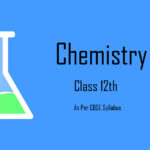Uses of inert gases
Helium is used:
Gas cooled Nuclear reactors
In filling balloons for meteorological observations.
In the...
Xenon-oxygen compounds
Xenon-oxygen compounds
Xenon forms some important compounds with oxygen like XeO3, XeOF4 XeO2F2.
Preparation of Xenon-oxygen compounds:
Various xenon-oxygen compounds are prepared as follows:
Partial Hydrolysis XeOF4
Partial Hydrolysis...
Xenon-fluorine compounds
Xenon-fluorine compounds
Xenon forms three binary fluorides, XeF2, XeF4 and XeF6 .
Preparation of Xenon-fluorine compounds:
Properties of Xenon-fluorine compounds:
XeF2 is linear, XeF4 is square planar and...
Group 18 elements- General Properties
Group 18 elements: helium (He), neon (Ne), argon (Ar), krypton (Kr), xenon (Xe) and radon (Rn) having the electronic configuration ns2 np6, are named...
Oxoacids of halogens
Fluorine due to its small size and high electronegativity forms only one oxoacid HOF (Hypofluorous acid).
Other halogen forms several oxoacids as given in the...
Hydrogen Chloride (HCl)
Preparation of Hydrogen Chloride:
It is prepared by heating sodium chloride with concentrated sulphuric acid.
Properties of Hydrogen Chloride:
HCl is a colourless...
Chlorine – Preparation, Properties and Uses
Preparation of Chlorine:
Chlorine can be prepared by any of the following processes:
Properties of Chlorine:
It is a greenish yellow gas with...
Anomalous behavior of Fluorine
Fluorine is anomalous in many properties like, ionisation enthalpy, electronegativity, enthalpy of bond dissociation that are higher than expected from the regular trends among...
Group 17 Elements- General Properties
Fluorine, chlorine, bromine, iodine and astatine are members of Group 17. These are collectively known as the halogens (Greek halo means salt and genes...
Sulphur – Types, Preparation, Properties and Uses
Sulphur (S)
Sulphur exhibits allotropy, two important allotropes of which are:
Yellow Rhombic (α - sulphur)
Monoclinic (β- sulphur)
At...


